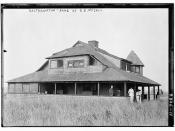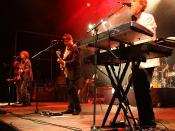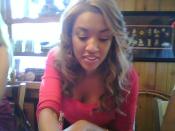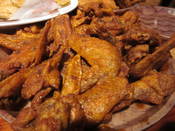establishment, 'Hooters,' is an eating establishment/bar venue that promotes its venue as a family restaurant. This establishment can hold about 100 people. The geographical area that this restaurant is situated in is also the downtown area.
Literature Review Many authors using participant observations report that a social setting such as a restaurant/bar/club allow people to put on personas by dressing out of character and freely interacting with one another to get away from the pressures of the 'real world' (Caceres and Cortinas, 1996; Hutchinson, 1999; Loe, 1996; McCall et al., 1991). According to research done by Cortinas and Caceres (1996; 245), aside from the fact that the bar is a Latino gay bar, it is a "Fantasy Land," 'a surrealistic space where reality is suspended, a home away from home.' Methods The common method employed by these authors was that of participant observation. Aside from participant observations, all of the authors had various forms of alternate methods such as in-depth interviews and historical data that aided them in their research.
For example, McCall et al used informal conversational interviews and semi-structured interviews with bar patrons. On the other hand, Hutchinson conducted intensive interviews with a specific sample of five African American women. These additional methods allowed them a more in depth level in order to fully understand their observations. The sampling technique varies among the four researchers conducted. As well as participant observation, Caceres (1996); Hutchinson (1999); Loe (1996) and McCall (1991) all conducted interviews with patrons and employees of the nightspot.
There are many variables such as alcohol and music that indicate and are used within the context of each research to explain the studies.
Summarizing the main result of these studies, Caceres (1996:245) indicates that: The bar, as a leisure space, provided a social setting where gender and sexuality as social categories are being reconstructed and where alcohol use, besides its legitimized use in so-called social drinking, is part of several rites related to the very disruption and dispersion of the gender/sexuality structure.
Differences The articles were different in that the researchers were looking to identify different patterns of behavior amongst men and women in nightspots such as a restaurant/bar/club. Caceres (1996) solely focused on the behavior in the context of a gay Latino bar, where alcohol played a substantial factor within their community. Through interviews they learned that this group of people escape the real world into a 'fantasy land.' Hutchinson (1999) researched behavior amongst African American male-female relationships in a nightclub setting, which focused on their interactive methods of sexual dancing. Similarly, McCall et al., (1991) focused on the interaction between semi-acquainted men and women an looked at the behavior tactics women use to 'parry off men.' On the other hand, Loe (1995) looked at gender and power within the establishment of a 'family restaurant' that require women to wear provocative uniforms in a sexist hierarchal structure that holds men in the top tier as managers, and the women at the bottom. The preceding articles captured similar theories of a social environment and gender relations among patrons and employees. The fundamental concept strived to be reached is that there are many factors that each article alluded to such as alcohol, music and the way women dress, which contributes to make a social environment. This environment in turn creates an atmosphere that allows people to act out of character, which generates social conflict. Consequently, many times this social interaction raises conflict.
Conclusion to Observational Findings In a gendered workplace, one cannot ignore the gender roles that employees are expected to enact. At turbo, sex-type, behavior and appearance are a part of their working concept. This concept is commodified and sold to customers by appealing to their desires. Women are devalued because they're assumed to be unable to conform to the demands of the demanding job. At "Hooter's,"� women are subjected to wear a provocative uniform which consists of tight t-shirts that conforms to the breasts and reveals the mid-drift, and shorts that have slit up the sides. It was evident that a few waitresses on different occasions felt uncomfortable with their uniform because they frequently tried tugging to pull their shorts lower.
Through observations it seems clear that the effect of drinking is not simple and direct. Drinking is typically one among a number of factors that determine behavioral outcomes, so that understanding the outcomes requires a detailed picture of the
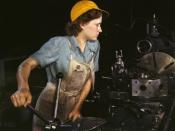
![[Edward McCall presents a silver basket of flowers to New York Giants manager John McGraw at Polo Grounds, NY (baseball)] (LOC)](https://s.writework.com/uploads/3/32066/edward-mccall-presents-silver-basket-flowers-new-york-giant-thumb.jpg)
